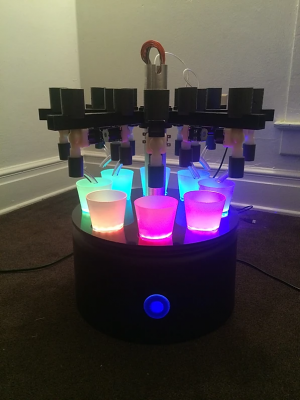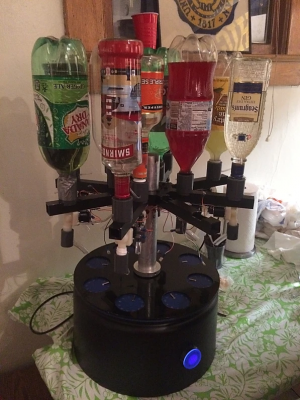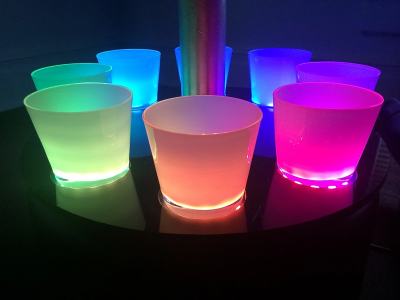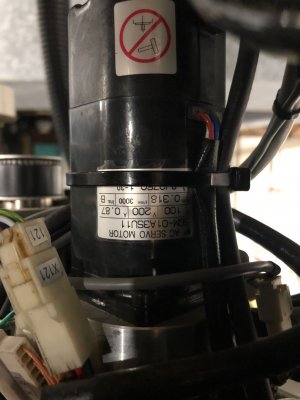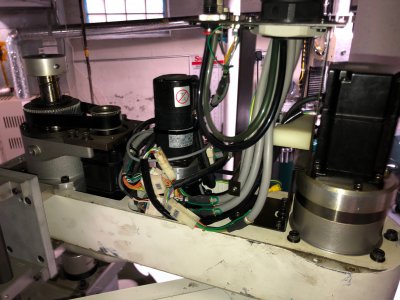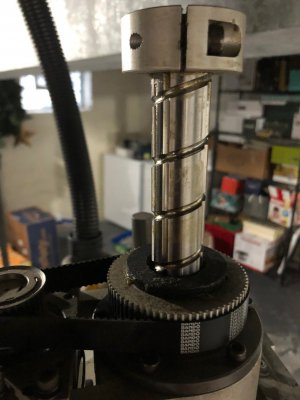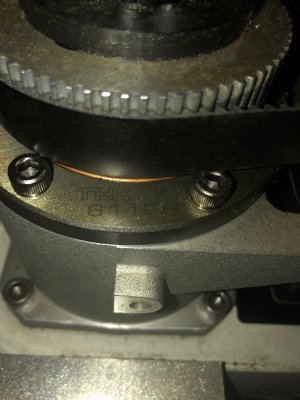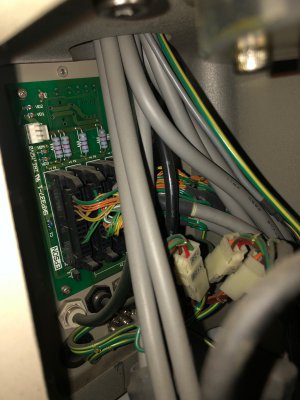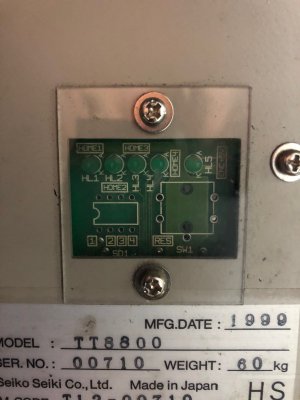OK robot is in the house and down the basement. That was as difficult as dealing with my 12x36 lathe (granted I had a buddy help with that one).
Robot in my trunk again. Used a webbing strap to keep the arm bent over on itself.
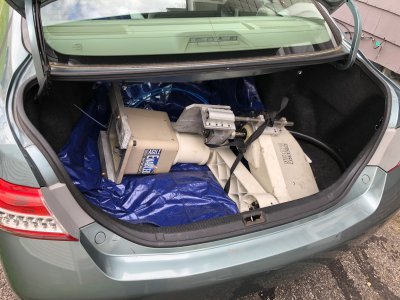
I used my Harbor Freight engine hoist to lift it out of the trunk and onto a piece of OSB. I like the hoist but it is a real chore to take it apart and carry it upstairs. Also the long legs are great to go under a car but terrible for reaching on top of work benches.
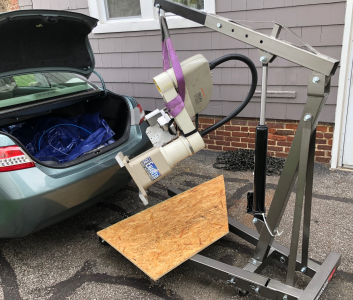
I manhandled it onto the landing of the basement stairs and used the same ramp I did for the lathe to set it up to slide down.
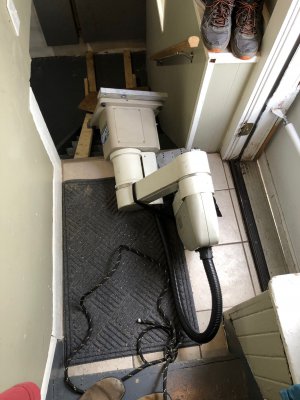
It was secured with some rope going to a chain on the ceiling joist. I used an auto locking belay device (rock climbing) to hold the load until I wanted to lower it slowly. There is a painted plug that normally covers this hole.
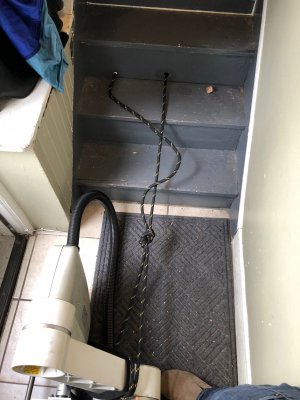
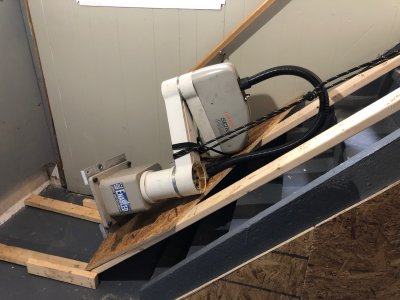
Once at the bottom I took apart the engine hoist and carried it downstairs, reassembled it, and picked up the robot again. I could lift the robot for sure, but I was not comfortable moving it around and certainly not lifting it onto the table top. There was around 20 pounds of tooling that I could have removed to make life easier, but I didn't consider it.
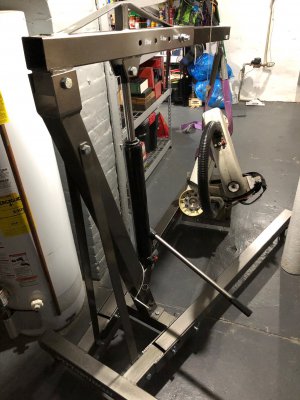
I re-positioned the lifting strap and tried to get it on the table but there wasn't room under the duct. Plus the cable tube was hitting the ceiling on the other side. I ended up lowering the table top by 5 holes and it was just enough to get the base onto the table.
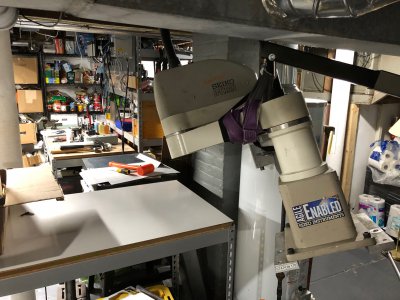
The final part really sucked. The hoist's legs are too long and I couldn't get the hook over the table. I ended up having to unhook it from the hoist with only half the base on the table and heave it the rest of the way. Not super safe but I was ready to jump out of the way if it started to fall. It ended up working out ok thankfully. I didn't have anything to hold it down to the table with so I used the rope to secure it.
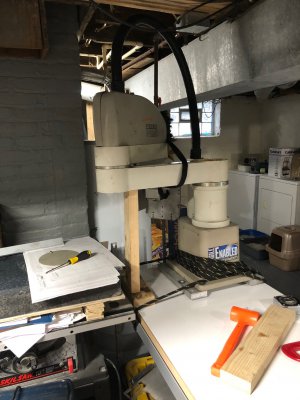
Here's a quick peek inside the head. T2 motor is on the left, U axis motor is in the middle, and the Z axis motor is on the right belted to the ballscrew.
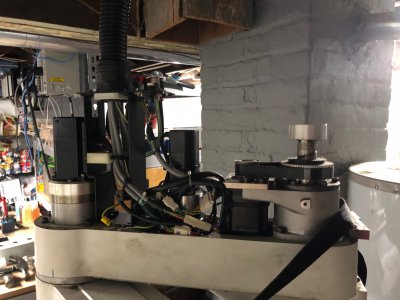
Bringing it in took 2 and a half hours. I'm exhausted and calling it a night.
-Mike


